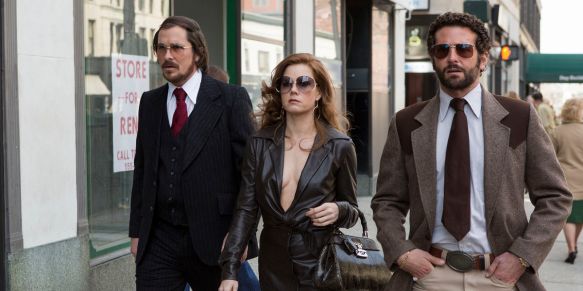Last night I saw Ethan and Joel Coen’s latest film Inside Llewyn Davis with a friend, and I enjoyed it tremendously. Well maybe enjoyed isn’t the best word, because it was actually sad and funny but in a “laughing at the absurdity of the world” kind of way. While I’m thinking of ways of putting my thoughts and feelings about it into words, I figure I could write a bit about the movie we watched at his house while having drinks after. Enjoy would also be the wrong word here, but it was the kind of thing that made you say “WTF” in the best way. A relatively obscure psychological horror film from 2006 (that I had vague recollections of hearing about when I was in high school), Bug was adapted from a play by Tracy Letts who also wrote the screenplay and directed by William Friedkin, who once helmed movies like The Exorcist (1973), The French Connection (1978), and To Live and Die in L.A. (1985). That last one is probably one of the most “dark and gritty” movies that I’ve seen despite the sunny Los Angeles setting, some cop movie clichés, and a soundtrack by Wang Chung (before “dark and gritty” became a thing in recent years) and does it much better than recent fares.
So why were we interested in Bug? My friend had seen and liked Killer Joe, by the same writer-director team. For me, I had recently read an article by film critic Scott Tobias, formerly of The AV Club and now writing for film-focused pop culture website The Dissolve, about movies that received F on CinemaScore, an organization that polls movie audiences on opening weekends with questionnaires. We concluded that Bug is by no means a bad movie, in my opinion, but it displeased audiences who saw it opening weekend just enough to become one of the 8 movies to earn an F on CinemaScore.
Ashley Judd and Michael Shannon co-star as Agnes and Peter. Agnes lives in a motel and repeatedly receives menacing phone calls, and her abusive ex-husband, who has just been released from prison, might be responsible for those. As we learn over the course of the story, she partakes in the use of alcohol and cocaine because she remains shaken up by the disappearance of her son years ago. Peter is the army veteran with whom she develops a relationship after a friend introduces them to each other. The new man in her life at first appears to be nice, though a bit quiet and awkward, but he gradually becomes more unsettled about the presence of bugs and government conspiracies and draws Agnes into his delusions. What begins as debauchery and fooling around between two lonely people with troubled pasts escalates into obsession, conflicts with the outside world, and a nightmare of murder and self-destructive behavior.
One can find in Bug a strong indictment of violence and a terrifying story of codependency. There are quite a few acts of violence, some are shocking, others are cringe-inducing, and all are uncomfortable. The film shows the damaging effects on the psyche to those exposed to violence. Agnes has a history of being on the receiving end of abuse. With Peter, it seems more or less the case that he began developing his delusions during military service. Agnes begins defiant when it comes to her ex-husband, snapping angrily at the repeated phone calls that she believes are coming from him and shows resistance when he first shows up, she becomes more helpless as their confrontation drags on and he gets physically abusive. Peter becomes an increasing part of her life, her codependency deepened as she began to believe in him, and they began to feed off of each other, becoming increasingly and collectively convinced of the delusions (and her abuse of hard drugs does not help). They find connection in one another because they were both subjected to violence and had been broken down.
Judd and Shannon deserve to be commended for their performances. Both effectively convey their characters’ troubled pasts, and Judd’s appearance in the film is pretty shocking, while Shannon’s becomes increasingly so as the normalcy of his character is eaten away by his disturbed mental state. Told only from their perspectives, the story tracks their descent into madness, and they are so convincingly unhinged and erratic over the course of the movie. They rail against their associates and deliver paranoid rants about conspiracy theories that eventually implicate their past acquaintances as being agents of the conspiracies. There are some unsettling acts of self-mutilation—most are implied, but one on-screen act made me yell “Oh no! Why?!” repeatedly—made all the scarier by the combination of gore and lighting that contribute to uncomfortable aesthetics.
The actors’ onscreen presence and the film’s mood are almost impossible to describe, and writing about it does no justice to the acting or the director’s use of the minimalist setting of the motel room to create such a terrifying, claustrophobic environment. The ending is more or less perfect in the context of the film, marred only inappropriate music during the end credits and a couple of mid- and post-credit shots designed perhaps to add ambiguity and make the ending less bleak. Those shots weren’t very effective and didn’t add anything, mostly because the film was such a perfectly bleak, unsettling journey into the emotional and mental states of two troubled individuals who found companionship in each other that there was really nothing more to add.

